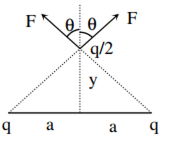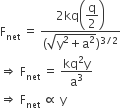(i) Use Gauss’s law to find the electric field due to a uniformly charged infinite plane sheet. What is the direction of field for positive and negative charge densities?
(ii) Find the ratio of the potential differences that must be applied across the parallel and series combination of two capacitors C1 and C2 with their capacitances in the ratio 1 : 2 so that the energy stored in the two cases becomes the same.
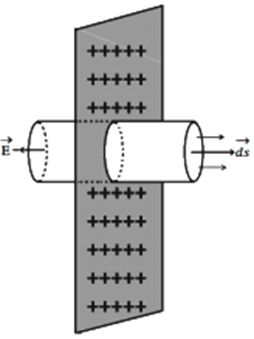
 on both sides of the sheet. Let a point be at a distance a from the sheet at which the electric field is required.
on both sides of the sheet. Let a point be at a distance a from the sheet at which the electric field is required. Area of the cross section of the gaussian cylinder.
Area of the cross section of the gaussian cylinder.







(a) Deduce the expression for the torque acting on a dipole of dipole moment p in the presence of a uniform electric field E⃗.
(b) Consider two hollow concentric spheres, S1 and S2, enclosing charges 2Q and 4Q respectively as shown in the figure.
(i) Find out the ratio of the electric flux through them.
(ii) How will the electric flux through the sphere S1 change if a medium of dielectric constant 'εr' is introduced in the space inside S1 in place of air ?
Deduce the necessary expression.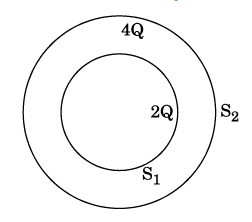
a) Dipole in a uniform electric field:
Consider an electric dipole consisting of charges −q and +q and of length 2a placed in a uniform electric field making an angle θ with the electric field.
Forces acting on the two charges of the dipole, are +qE and -qE.
That is, the net force on the dipole is equal and opposite.
So, Force = 0
Two forces are equivalent to torque having magnitude given by,
Therefore, torque acting on the dipole is given by, 
b) i) Charge enclosed by sphere S1 = 2Q
Charge enclosed by sphere S2 = 2Q + 4Q = 6Q
Now, using Gauss law, electric flux enclosed by sphere S1 and S2 is given by, 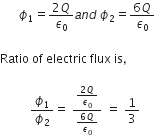
ii) If a medium of dielectric constant 'εr' is introduced in the space inside S1 in place of air, electric flux becomes

That is, electric flux decreases.
(i) If two similar large plates, each of area A having surface charge densities 1s and 2s are separated by a distance d in air, find the expressions for
(a) field at points between the two plates and on outer side of the plates. Specify the direction of the field in each case.
(b) the potential difference between the plates.
(c) the capacitance of the capacitor so formed.
(ii) Two metallic spheres of radii R and 2R are charged so that both of these have same surface charge density s. If they are connected to each other with a conducting wire, in which direction will the charge flow and why ?
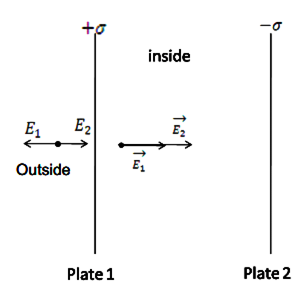







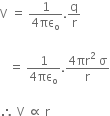
Tips: -
A long cylindrical shell carries positive surface charge in the upper half and negative surface charge in the lower half. The electric field lines around the cylinder will look like figure given in: (figures are schematic and not drawn to scale)




D.

Field lines should originate from a positive charge and terminate negative charge.
Two charges, each equal to q, are kept at x = −a and x = a on the x-axis. A particle of mass m and charge qo =-q/2 is placed at the origin. If charge qo is given a small displacement (y<< a) along the y-axis, the net force acting on the particle is proportional to
y
-y
1/y
1/y
A.
y
